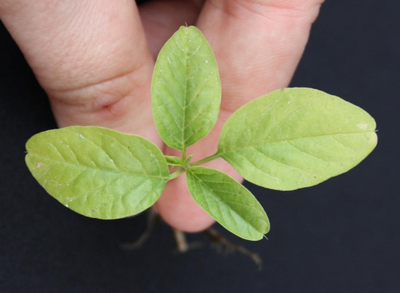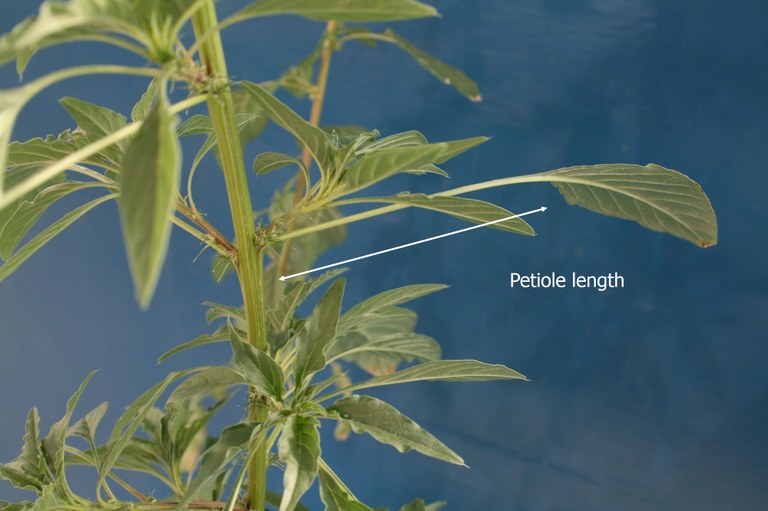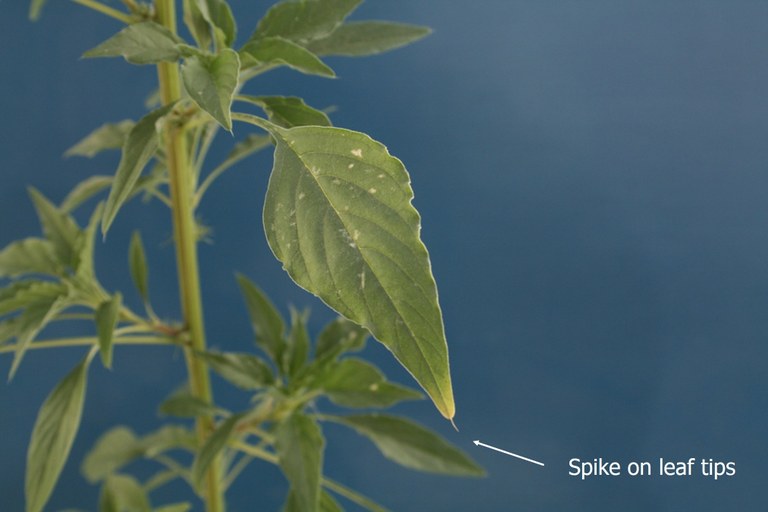Palmer Amaranth

- Palmer Amaranth (NDSU Photos)
Latest Update
New Equipment Cleanout Fact Sheets
- Combine Cleanout in the Field (PDF)
- End of Season Combine Cleanout (PDF)
- ATV Clean-up and Sanitation (PDF)
- Planting and Tillage Equipment Clean-up (PDF)
New NDSU Publication.
Identification, Biology and Control of Palmer Amaranth and Waterhemp in North Dakota
Palmer amaranth and waterhemp are difficult to control pigweeds that are found in North Dakota. This publication focuses on how to identify these species from other pigweeds, and focuses on biology of these weeds that makes them difficulty to control. General management principles are also discussed.
Potential Impact
“Palmer amaranth’s prolonged emergence period, rapid growth rate, prolific seed production, and propensity to evolve herbicide resistance quickly makes this the most pernicious, noxious, and serious weed threat that North Dakota farmers have ever faced.” - Rich Zollinger, Retired NDSU Extension Weed Scientist
Palmer amaranth is a competitive and aggressive pigweed species that poses a major threat to North Dakota crop production. Here's why.
- Grows aggressively: Can grow 2 to 3 inches per day in optimum conditions
- Can grow to 6-8 feet tall
- Has reduced yield up to 91 percent in corn and 79 percent in soybean
- Prolific seed producer: Up to 1 million seeds per plant
- Emerges throughout the growing season
- Very prone to herbicide resistance (multiple modes of action)
“It’s the only weed I’ve seen that can drive a farmer out of business.” - Bill Johnson, Purdue University Extension Weed Specialist
Identification
NDSU Palmer Amaranth Identification PDFs

- Palmer amaranth seedlings have egg-shaped leaves with a hair-like protusion at the leaf tip (Photo source: Christy Sprague, Michigan State University)

- Palmer amaranth can be distinguished from waterhemp by its petiole length. The length of the petiole will be as long or longer that the leaf. (NDSU Photo)

- Another distinguishing feature of Palmer Amaranth is the small spike sometimes found at the tips of the leaves. (NDSU Photo)
In the video below, Bruce Ackley from Ohio State University describes some of the identifying features of Palmer amaranth.
Reporting
If you think you have found Palmer amaranth, contact your local NDSU Extension agent. Please help us keep it out by watching for it and reporting any sightings.
Prevention and Control
- Between-Field Combine Clean-Out to Reduce Weed Seed Movement (video, 4:15)
- How to Clean a Combine to Limit the Spread of Weed Seeds (video, 6:40)
- Equipment Sanitation: Between-Field ATV Clean-up and Sanitation (video, 1:57)
- Equipment Sanitation: Tillage and Planting Equipment Clean-up and Sanitation (video, 3:15)
- Scout for Palmer Amaranth Now
- NDSU Extension Offers Palmer Amaranth Control Options

